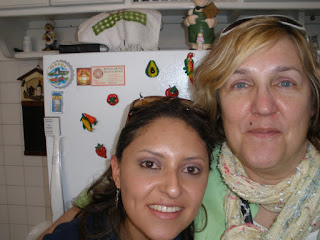
Before, when I, Joe, thought of guinea pigs I could only think of the pet guinea pig (or hamster—who knows the difference between those terrible pets anyway?) my sister had when we were growing up. A little while, probably just a few days, into its existence at our house, it went missing. Months later we found it. Underneath our old, scraggly basement couch we found a familiar looking and familiar smelling dead pet guinea pig. After our last few weeks here in Ecuador none of us will think of guinea pigs, or cuyes as Spanish-speakers call them, in the same way.
This monumental transformation of our perceptions of this small, measly rodent starte
Eating guinea pig, or cuy, dates back further than modern-day Ecuadorian and Peruvian omnivores. Supposedly, according to Juleen, the Incans were enthralled with eating cuy, placing some spiritual significance in consuming the rodent. For more on this part of the story, let’s go to the source herself. Here’s Juleen.
Well, being the Incan expert that I am, I googled it. Here is what I found, “The cuy has a pl
So, in pursuit of Incan bliss, we followed not the trails to the ancient civilization’s sites, but the faint sounds of cuy that give the guinea pig their Spanish name. Our first encounter with the royal rodent occurred at an animal market in Otavalo, Ecuador, a few hours north of Quito. Among other animals, the predominantly indigenous capitalists maintained a thriving cuy trade. Sellers had baskets full of fluffy-haired guinea pigs. Buyers went around grabbing the necks of the cuy, testing the meatiness of the animals, throwing them into a rice sack if they met the mark.
Okay, we can handle the cuy exchange. That’s not too hard on the eyes, nor the stomach. But could we handle cuyes cooking as they rotate above a charcoal grill? Unlike the familiar rotisserie poultry, the cuy comes with head, paws, and, well, everything attached. No polite de-animalization of your lunch here. Still we survived.
The logical next step of our cuy-based Incan investigation is the climax—eating the darn thing. Why else would we have stopped at the road-side rotisserie cuy vendor? Eleana’s father was anxious for us to try the cuy, of all Ecuadorian meals his favorite. And so we stopped the car, bought a whole cuy (very crisp, please, he asked) to go for $15. Wrapped in a plastic bag that hid the sight but not the rich smell, we headed towards Eleana’s hometown in Riobamba, three hours south of Quito.
Finally, that evening the time had come to eat like kings, or, more appropriately, Incas (meaning kings in the indigenous Quechua tongue). Juleen wasted no time in putting her portion of the cuy to waste, eating the rodent like the pig she is. Joe, as he is inclined to, politely and nimbly picked the small pieces of meat off of the small bones. Denise, 
Now, all familiar with the Moores’ sad pet guinea pig tale, we can’t help but think differently about guinea pigs. Never again will we let such a useless pet go to waste. And, having done the important part and eaten like an Inca, we plan to continue our Inca quest right after our Amazonian adventure that starts with a 11pm bus ride tonight!

The comment about the crunch of the fingernail was, indeed, disgusting!
ReplyDelete